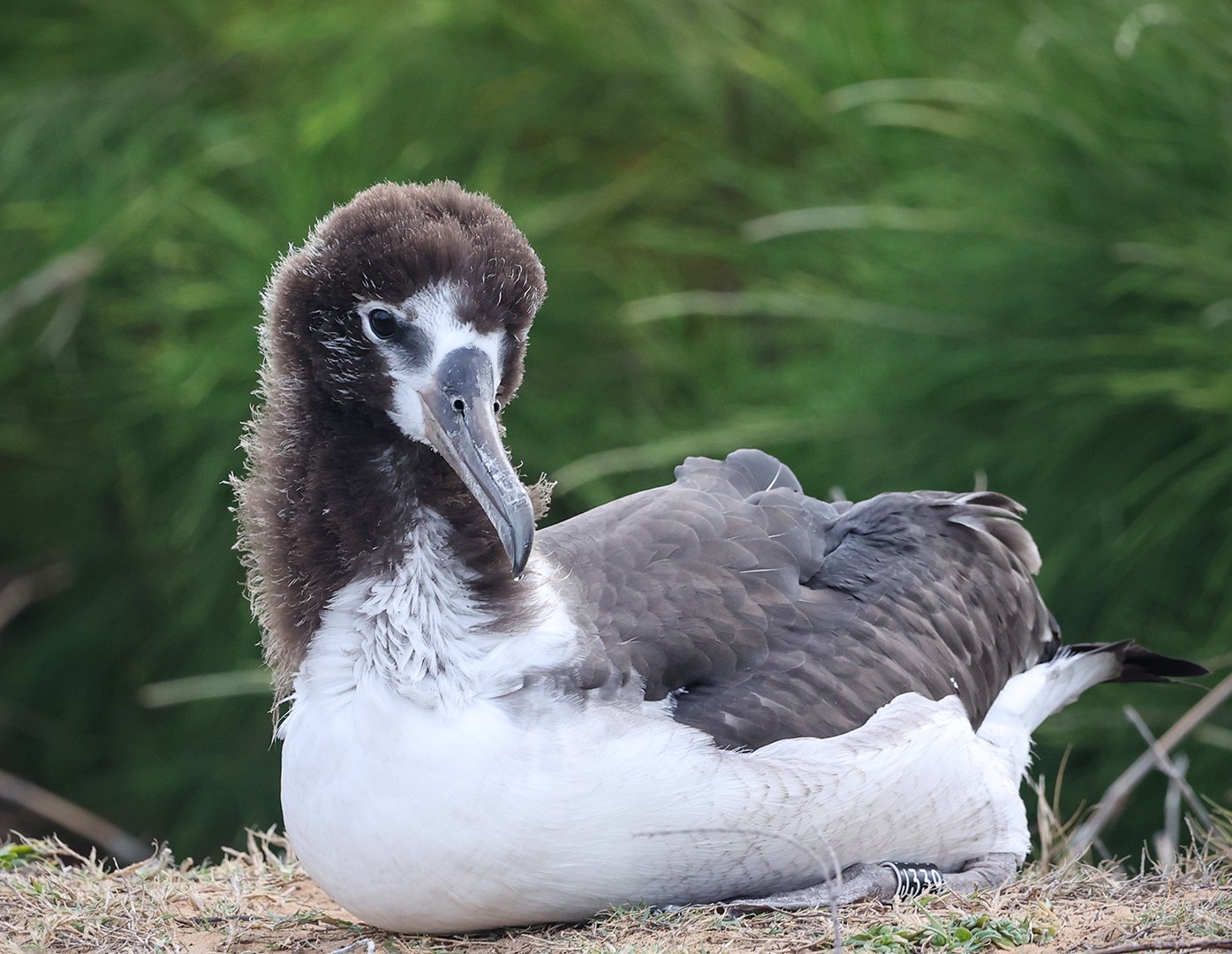 Hōkūpaʻa five days before fledging, photograph by Hob Osterlund
Hōkūpaʻa five days before fledging, photograph by Hob Osterlund
Laysan Albatrosses Phoebastria immutabilis breed in several localities along the northern shore of the Hawaiian island of Kauai, from the Pacific Missile Range Facility Barking Sands through Princeville, private lands to the Kilauea Point Nature Reserve. The following text reporting a new breeding locality on the island is extracted from an article by Hob Osterlund, founder of the Kauaʻi Albatross Network, a Safina Center Conservationist-in-Residence and a long-term supporter of the Albatross and Petrel Agreement, that gives information of a new breeding locality on the island's southern shore.
“On July 9, 2025, a mōlī (Laysan albatross) chick fledged (flew for the first time) from the hotel grounds of the Point at Poʻipu on Kauaʻi. She was just over five months old. True to form, others of the roughly 250 chicks on the island had also started fledging. But something set this particular chick apart.
Never in recorded history has there been a successful mōlī nest in Poʻipū, or anywhere on the south shore. Locals report having seen albatross in flight and in courtship on the ground. But no one (so far) could remember a chick growing up there.
Mōlī likely nested on many islands of the Hawaiian Archipelago for thousands—if not millions—of years. But on the islands where humans arrived with predators such as cats, dogs, rats and pigs, mōlī nesting would have disappeared. Kuaihelani (Midway) Atoll remains the mōlī mother ship—more than one thousand miles northwest of Kauaʻi—where this year there were 620,000 mōlī nests. Itʻs the largest colony of any albatross species in the world."
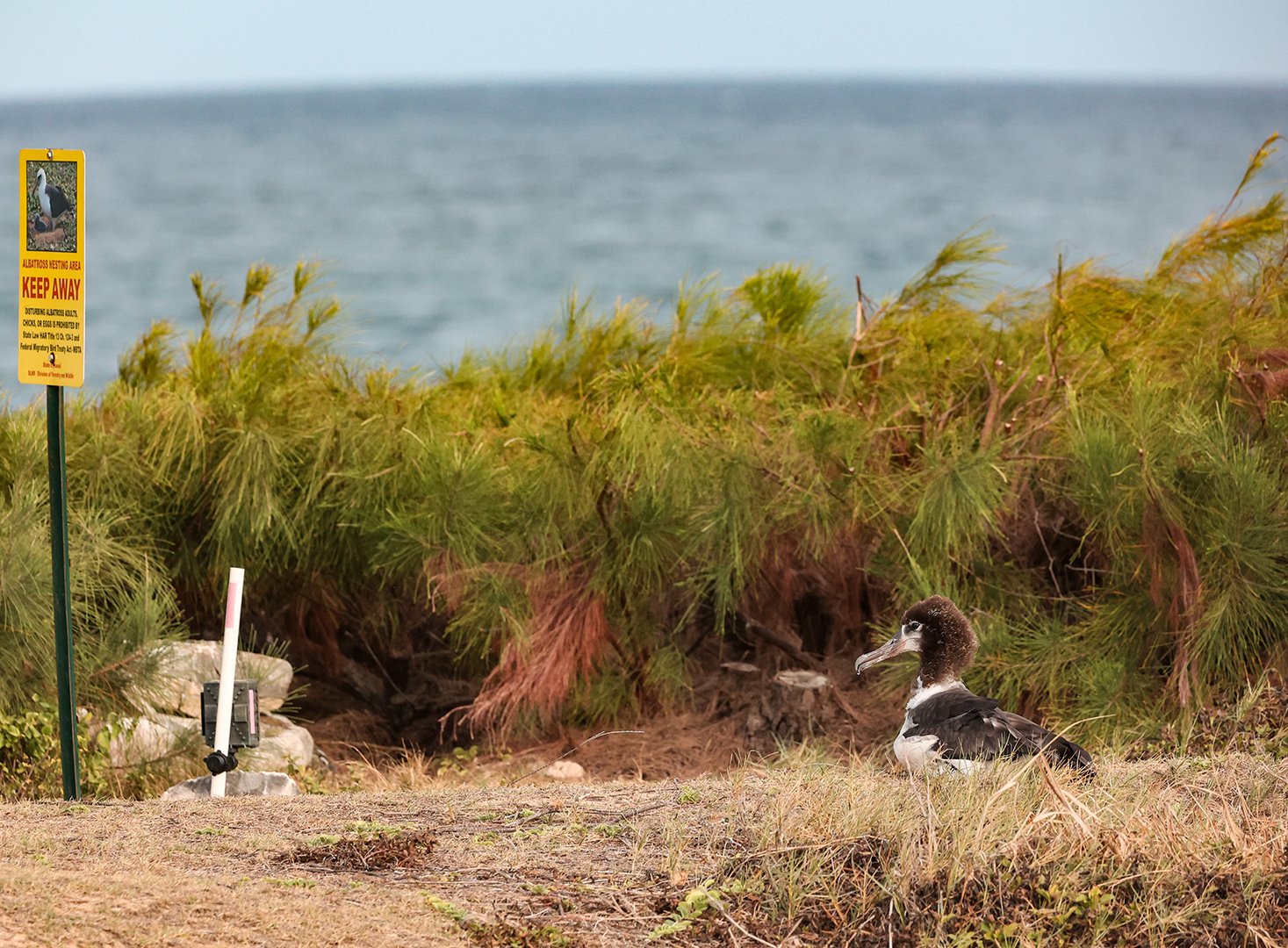
Hōkūpaʻa near its nest site, photograph by Hob Osterlund
"In modern history, a few intrepid mōlī attempted nesting at Barking Sands and Kīlauea Point. A 1980 article in the ʻElepaio Journal of the Hawaiʻi Audubon Society described a total of thirty albatross eggs between 1974-1980. Almost all were predated [sic], abandoned or vandalized. Three chicks did fledge in 1979, but only because of a temporary fence at Kīlauea Point. Zero chicks fledged from Barking Sands.
Since those days, predator protection on Kauaʻi has unevenly improved and the mōlī population has gradually grown. This nesting season Kauaʻi started out with three hundred and ninety-four known nests, not including ninety-three on Lehua Islet. As of late June, those nearly four hundred nests had produced two hundred and fifty chicks.”
In the previous season a Laysan Albatross pair laid an egg at Poʻipu, but it did not hatch, so this season’s carefully protected fledgling, named Hōkūpa’a (Hawaiian for Polaris, the north star) is the first known from Kauai’s south shore."
Read the full article, containing two video clips of the chick wing flapping and of the fledgling taking flight by Hob Osterlund, here.
John Cooper, Emeritus Information Officer, Agreement on the Conservation of Albatrosses and Petrels, 22 July 2025

 English
English  Français
Français  Español
Español  A splendid Highly Pathogenic Avian Influenza virus cake addressing the WAD2025 theme of “Effects of Disease” formed part of the
A splendid Highly Pathogenic Avian Influenza virus cake addressing the WAD2025 theme of “Effects of Disease” formed part of the 






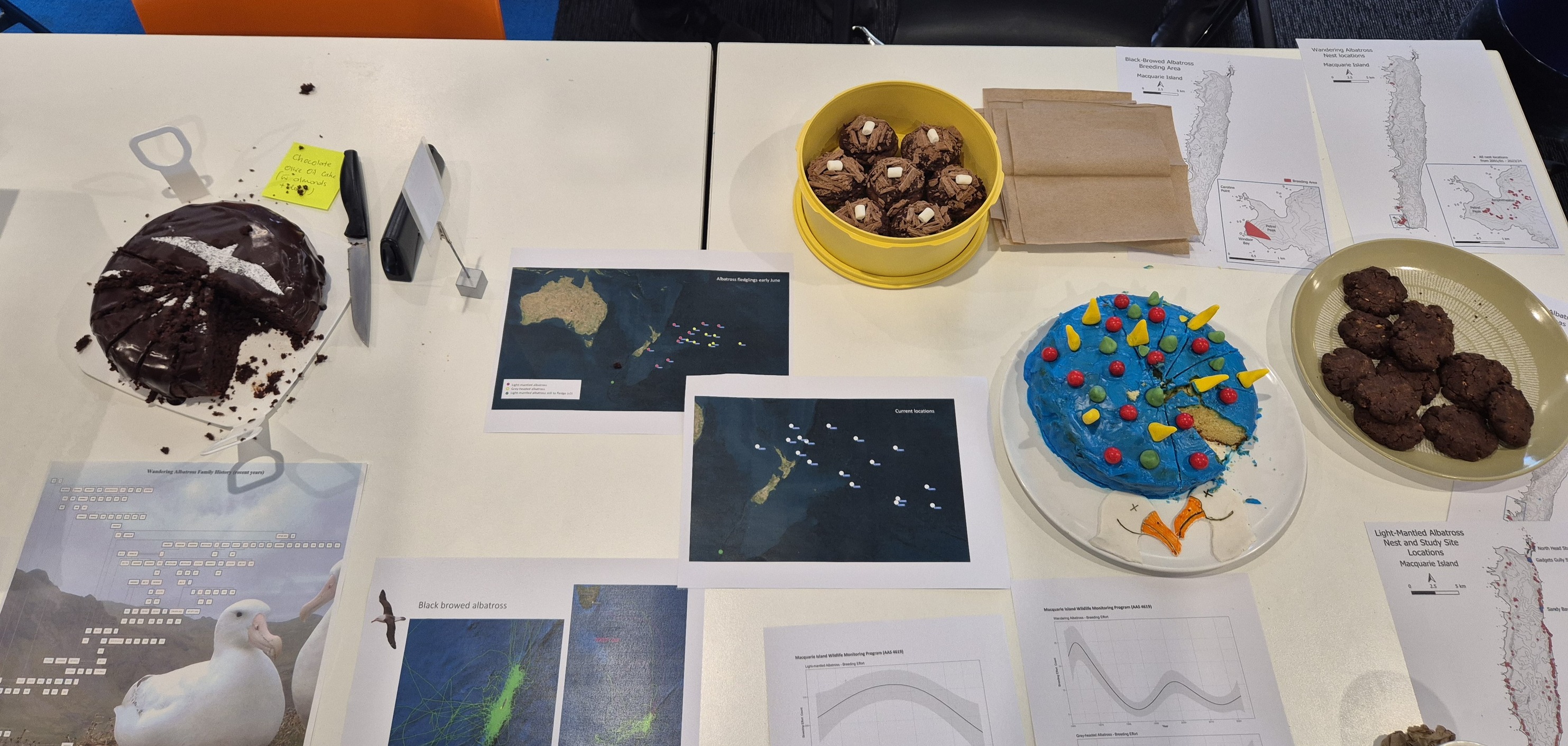

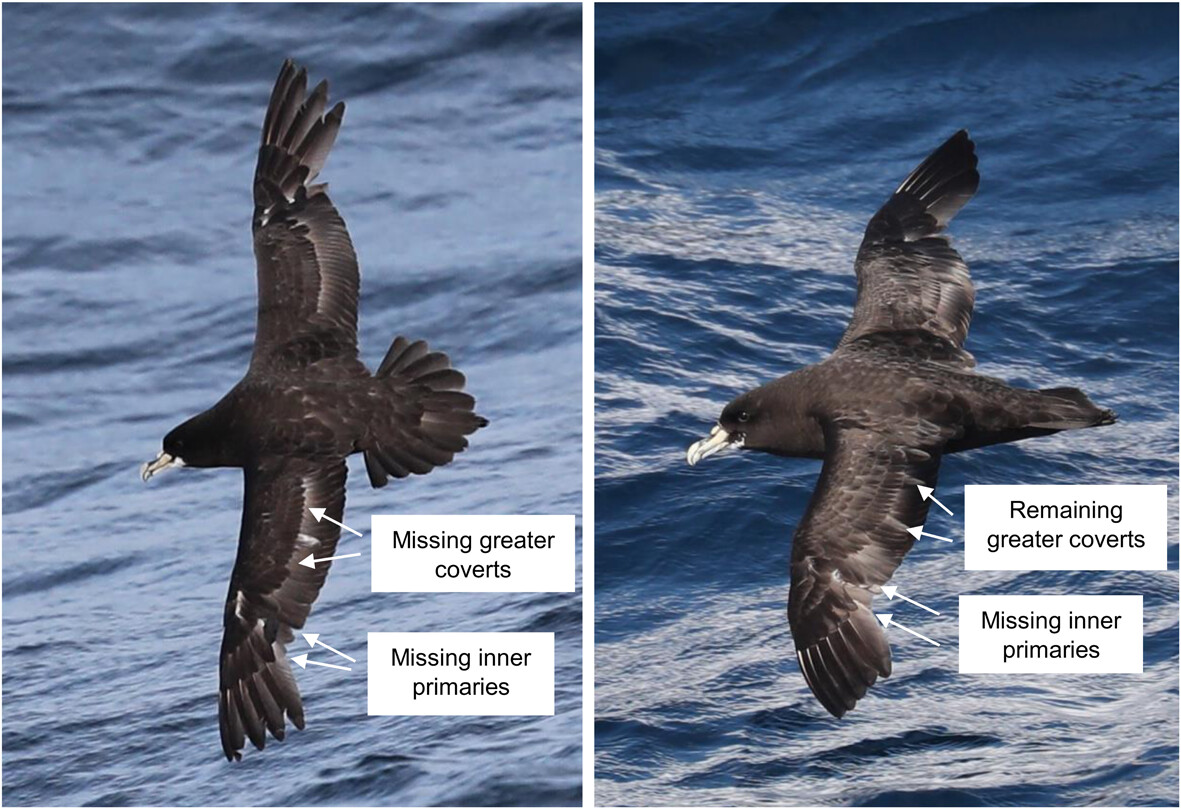
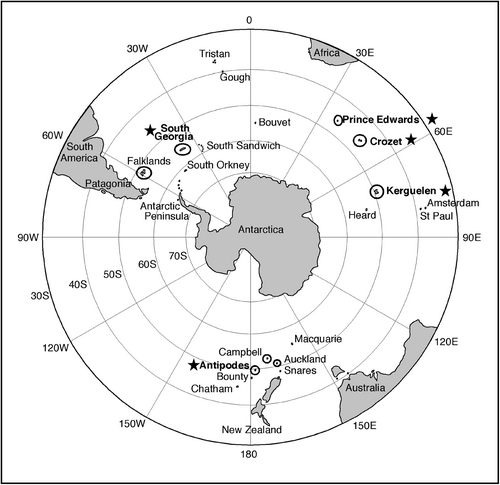 Breeding colonies of White-chinned Petrel (open circles) in the south Atlantic, Indian and Pacific Oceans. Colonies where samples were collected are indicated by a star (from the publication)
Breeding colonies of White-chinned Petrel (open circles) in the south Atlantic, Indian and Pacific Oceans. Colonies where samples were collected are indicated by a star (from the publication)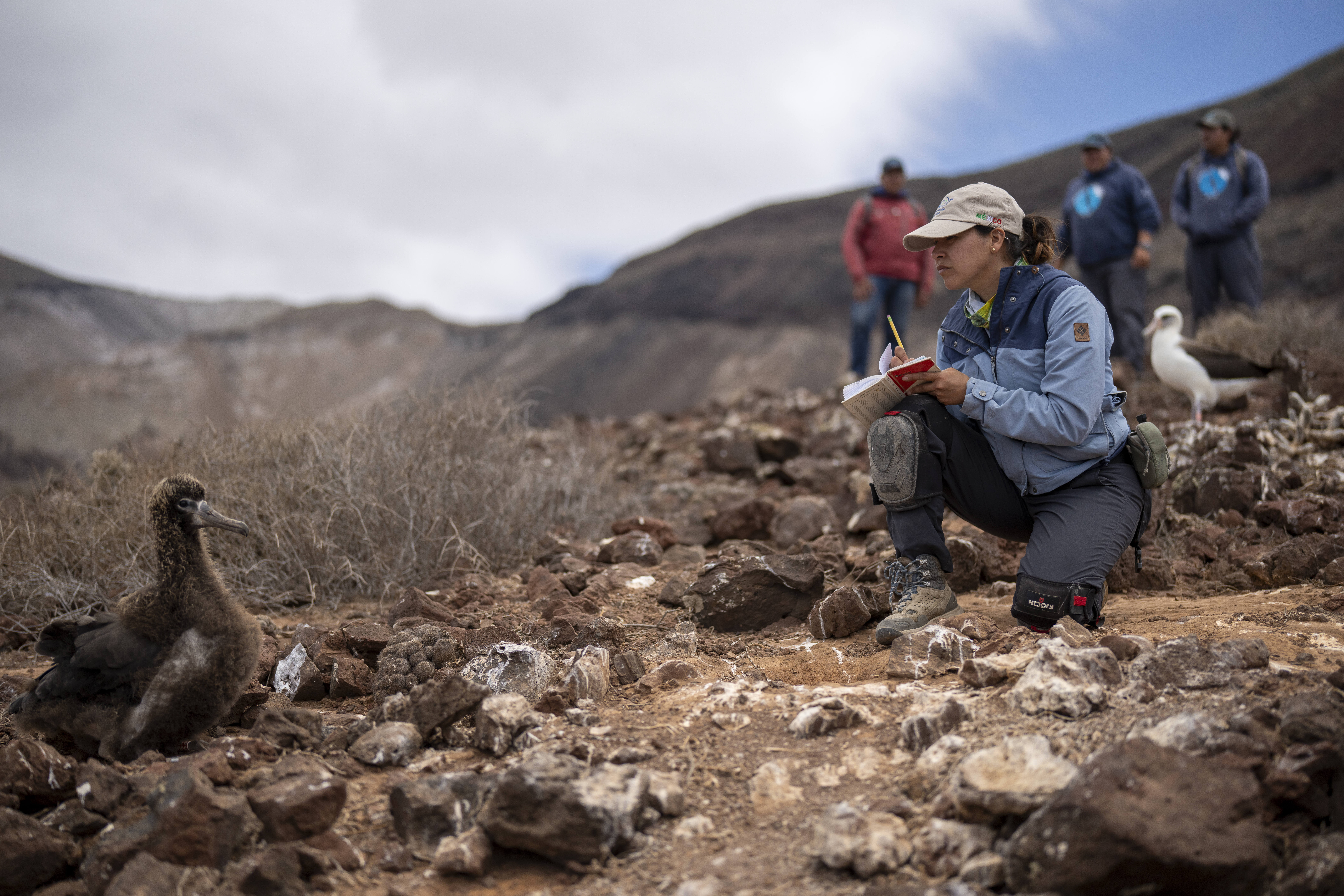 Recording a Laysan Albatross chick, UN World Restoration Flagship Comprehensive Island Restoration in Mexico, photograph by Todd Brown
Recording a Laysan Albatross chick, UN World Restoration Flagship Comprehensive Island Restoration in Mexico, photograph by Todd Brown